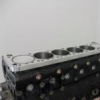Rb34 On Sale
Announcements
-
Similar Content
-
Latest Posts
-
Looks like they've been through a few versions of the kit; that is not the one I had trouble with (it had the level sender attached to baffles on the floor, the one you linked the level sender is hung from the hat). One obvious point about that kit is it has no baffles at all, not even the factory setup (although it looks like you can retain the factory setup if you want). Not sure if that will be an issue or not, the good news is it looks like you can get the pump nice and low in the tank, but that doesn't help if the fuel is all sloshing to one side of a wide flat tank
-
By soviet_merlin · Posted
One more question if you don't mind. Is the first kit you tried the same one as they currently sell as their fuel-pump-hanger kit? https://frenchysperformancegarage.com/collections/fuel-system-kits/products/fpg-bnr32-fuel-pump-hanger-kit-single-fits-stagea-c34-nissan-skyline-gt-r-r32-fpg-087?variant=42131478315186 Because according to their video the low fuel warning thing can be taken from the OEM hanger and attached to their new hanger. Just wondering whether this is the kit you weren't happy with, or whether it's a different revision. Thanks again! -
That's the thing....the basics of fuel and ignition are deceptively simple.....getting it to behave like factory in all conditions after airflow mods is way more complex. Newer cars like the V37 are all about modifying the standard ECU which is about a billion times more complex than they were 20 years ago, with a bunch of parameters affecting others
-
The larger TB I had on the SS was a pain to get to idle right, but, that was cable In the end they just raised the idle up a couple of hundred RPM so it was happy idling away either in gear or in park (slush box life) I'm curious on how my NC will idle with the new intake, larger TB, and cams that are currently going in/on, but I have faith that MX5 Mania will sort this "electronical" "black magic" out the best they can in the tune with a electronic TB Sometimes I wish I knew more about the intricacies of tuning, but most of the time I don't because I know it would hurt my brain 🤣
-
That's the thing. Cam is smaller than before.. though the old cam was +6 degrees advanced. We're talking huge changes here, the narrowbands want to trim out 20% of fuel and pull the (wideband) idle to like 16.0 AFR or such. One side is a little more trimmy than the other. Think along the lines of ~20% to ~15-18%. Unfortunately my scouring of the internet hasn't really found anyone with this issue. People either just disable NB's or have them wildly different, where one is -20% and the other is +20 or 0 (i.e a sensor is just dead/wiring is just busted). Turning them off and relying on the base map only results in the wideband reporting at about 14.0 with the Varex closed. It'd be a little leaner (closer to 14.7ish) with the Varex open. I know I can just change the switch points so that the narrowbands agree with the wideband, but it's still odd. Both of them are reading voltage, it's just that they're reading quite high mv, in the ~800 region. It's just odd. This was with the IAT fudged to report it was about ~22 degrees which is my guesstimation of the temperature in the room. I have an OEM sensor ready to try tonight, which is slow and crap - but .. worked last time I used it. Sadly I am aware that idle tuning with the big TB is going to be a PITA and I look 'forward' to many hours spent stalling or stumbling idle or delving into drivability things.
-







Recommended Posts
Create an account or sign in to comment
You need to be a member in order to leave a comment
Create an account
Sign up for a new account in our community. It's easy!
Register a new accountSign in
Already have an account? Sign in here.
Sign In Now